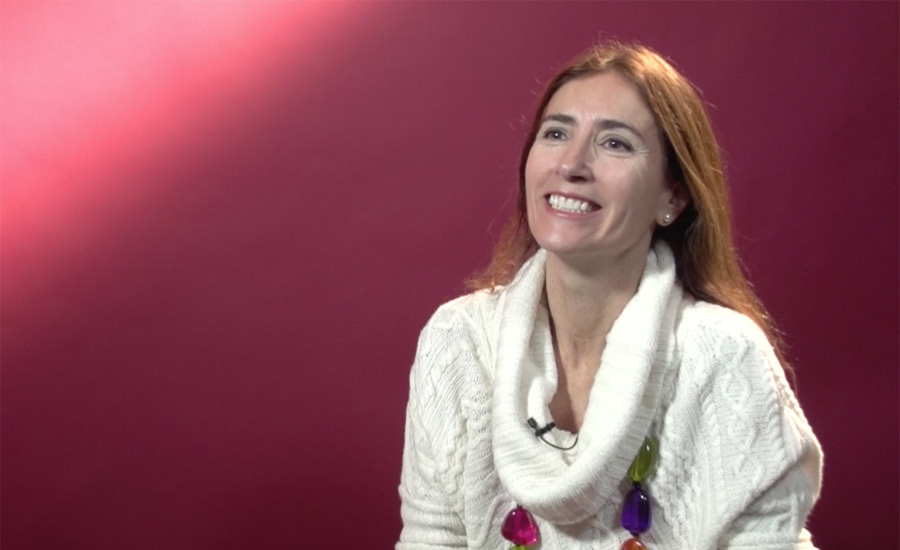
Reduce the gender gap in the workforce, and GDP will increase by 0.6 percent every year. And this rises to a full 12 percent growth in GDP for OECD countries in just over a decade.
The business case for fully integrating women in the labor market could not be clearer, says Carolina Schmidt, former Chilean minister for education and women in the Piñera administration.
Businesses are missing a “great opportunity” to increase competitive advantage, Schmidt told an audience at the IESE Women in Leadership Conference yesterday.
“Where you have gender balanced teams in senior management you see significant impact on return,” she said. “Analyst research shows that companies with higher proportions of women at board level outperform their competitors by 42 percent.”
This, said Schmidt, at a time when women are also making more of the purchasing decisions in the market than ever before. A significant 70 percent of household incomes are managed by women, she told the conference.
“Women are making the decisions about how money is spent in the home and outside. Key things like buying a car are increasingly being decided by women.”
Global demographics in education are also changing, said Schmidt, with women now outnumbering – and outperforming – men in tertiary education; some 47 percent of women in OECD countries are achieving university degrees, compared to 31 percent of men.
Time to Mine the Hidden Wealth
So what are businesses doing to “mine this hidden wealth?”
Not enough, says Schmidt.
“In OECD countries we’re still seeing less than 30 percent women in senior management positions. Demand for female talent continues to suffer from a generalized perception of women’s lack of capacity for leadership and stereotypes about women leaders who have no personal life.”
The supply chain too is being affected by legacy preconceptions, stereotypes and a real lack of female role models, warned Schmidt.
Concrete measures, she says, are needed. And the onus is on companies to understand the value women represent and make the changes necessary.
“Businesses can drive this by understanding the potential loss of competitiveness and making the business case for gender diversity. It’s time to measure and set goals; implement policies, sponsorship and training to tackle attrition; and reshape our corporate cultures.”
Provoking Change
One IESE alumnus doing just this is Carlota Pi, co-founder and CMO of Spanish energy startup, Holaluz, and graduate of the IESE Executive MBA.
“Our value proposition is ‘changing things,’” she told the conference.
For Pi and her fellow founders, workplace conciliation is “a thing of the past.”
Corporate culture at Holaluz, she says, is predicated on “being yourself.” In practical terms, this means starting from the bottom up, to ensure that equality and balance are built into every design decision.
Pi shared a number of key initiatives that her company is driving to build collaboration and create a “balanced ecosystem for women as well as men.”
Among these are a 90-day objective cycle; flexible working hours; and the addition of a crèche for male and female employees with children. Fruit too of this balanced ecosystem is the ratio of men to women employed at Holaluz, which is currently 50:50.
“Change doesn’t come by itself,” says Pi, whose operations are set to expand into Portugal, Italy and Latin America. “You have to provoke it. “
Bringing Men to the Table
Provoking change is also central to the vision shared by Eghosa Oriaikhi, director of Europe, Africa and Russia with energy multinational, Baker Hughes, and graduate of the IESE Global Executive MBA.
"Speaking out for change is not just a women’s issue, however," says Oriaikhi. "Men also need to be part of the conversation."
With male-dominated boards, executive roles and key jobs, the imperative is that men, too, adopt a proactive approach to reducing the gender divide.
“The analogy I use is about parties. You know there’s a party going on, but you’re not invited. Someone has to take the decision to open the door and invite you in.”
Key to this, she believes, is that men understand and think about the issues that women face, and the loss to business that lack of diversity represents.
“Gender balance is essential, not only in terms of return on capital or risk assessment, but in the broader context of how we advance socially and politically. The problems women face remain huge. We’ve come a long way, but we still have to address issues like pay gap, inequality in leadership and power, opting out of careers and finding no way to come back in – barriers to becoming who we want to be.”
Oriaikhi called for men in business to “break the silence,” and become a voice for change.
“Men can and should be models for change. They can widen the circle, share the issues, bring other men into the conversation. Change comes when people come together.”
IESE Women in Leadership – I-WIL
The I-WIL Conference welcomed an international audience of MBA students, executives and academics, including IESE ProfessorNuria Chinchilla and Kathleen McGinn, Cahners-Rabb Professor of Business Administration at Harvard Business School, who congratulated the speakers and the IESE MBA Women’s Club for organizing the conference.
The conference forms part of a raft of activities, sessions and networking events that IESE will stage over the course of this trimester to explore issues in gender balance, the issues affecting companies and measures to address the underrepresentation of women in business.
The Year of Women in Leadership